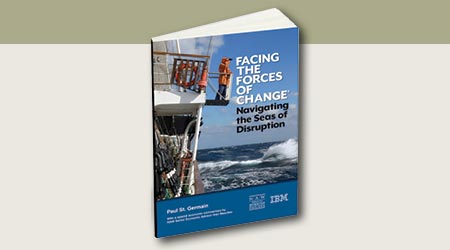
“Facing The Forces Of Change: Navigating The Seas Of Disruption,” by Paul St. Germain, analyzes the future of wholesale distribution within multiple lines of trade. This 11th edition explores the changes and opportunities in light of the many marketplace disrupters that are causing distributors to rethink their approach to technology, business processes and, most importantly, the customer experience. The following is an excerpt from chapter two, Leveraging Relationships In A Customer-Centric World.
If you ask distributors why their customers buy from them despite the myriad other options, they often cite their long-standing and deep relationship with the customer. These relationships may be of a personal or business nature, but the conventional wisdom is that people buy from people they like and that selling is about having a relationship first and then sales will follow.
The authors of the book, “The Challenger Sale,” acknowledge that although customer relationships are still important, they have been increasingly decoupled from the purchasing decision. Customers may say that they have a great personal relationship with a sales rep, but they will buy from the competition because they perceive that it offers better value. The authors say that, in a disruptive world, the customer relationship is becoming the result and not the cause of successful selling.
Amazon is probably the most obvious example of this kind of disruption. Companies assumed that their client relationships were solid based on having built and maintained them over time and perhaps by presuming that what they offered was what their customers valued most. Amazon changed this equation along at least two fronts.
On the one hand, it undercut distributors’ prices, and on the other, it offered faster shipping at an additional cost. By doing so it created two value propositions: one aimed at price-conscious customers and the other at those who valued saving time over saving money. Its Prime offering bridged this gap, providing value to a third segment of customers who were willing to pay a yearly fee for “free” two-day shipping, moving their focus away from price alone to the overall value of the transaction when they factored in shipping costs from other companies.
Although at first glance it seems a matter of semantics, there is an important difference between asking whether a customer needs certain products or services and asking whether those products or services will meet the customer’s needs. The latter question looks at the relationship from the customer’s point of view — that is, from the outside in — and opens the door to a customer-focused experience where a strong relationship results from continually delivering value to the client.
Instead of following the old business model in which a distributor told its customers how it would do business based on its own internal business rules and processes — for instance setting minimum order size or limiting delivery windows and locations — today’s leading distributors will ask their customers how they want to do business and then design services and offerings around meeting those needs. In the outside-in relationship, the customer experience is critical; if you can’t help the customer solve problems or help it achieve its outcomes, it will turn to someone who will.
Design Services To Meet Specific Customer Needs

 The Down and Dirty on Cleaning in Virus Season
The Down and Dirty on Cleaning in Virus Season How Surfactant Use is Expanding in Commercial Cleaning
How Surfactant Use is Expanding in Commercial Cleaning Operational Excellence Series 2025: Better Budgeting
Operational Excellence Series 2025: Better Budgeting